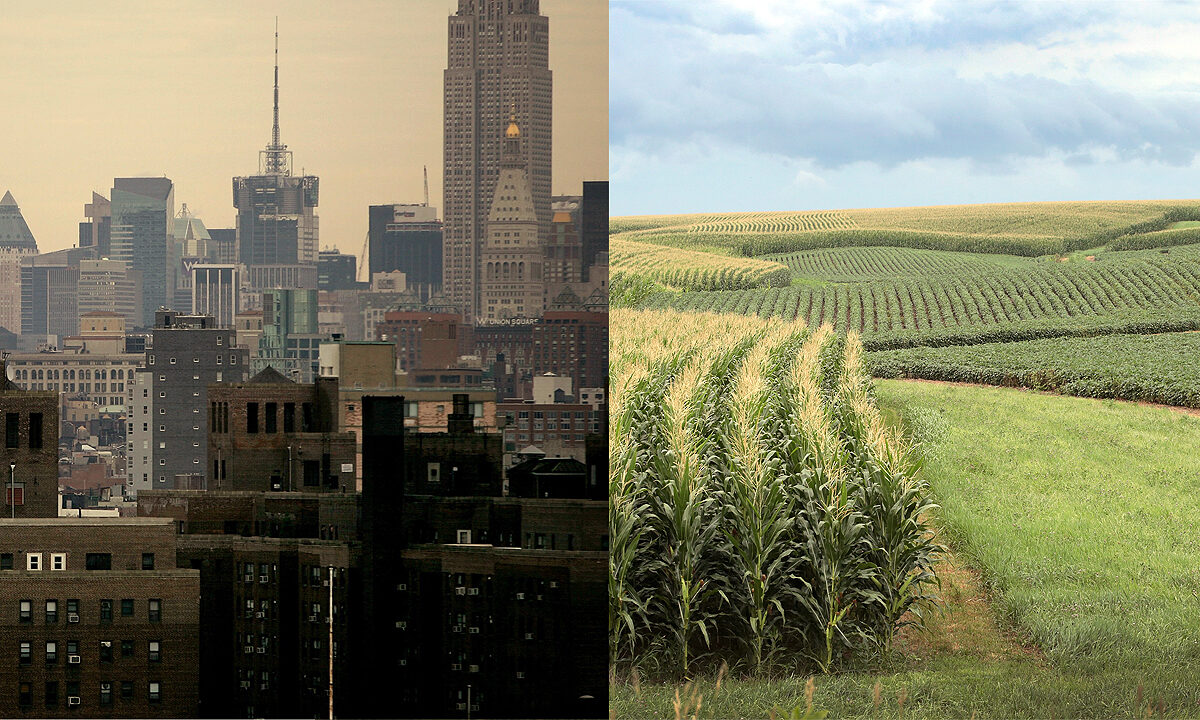


High inflation is hurting rural households disproportionately compared to urban dwellers, according to a survey.
According to Iowa State University (ISU) researcher Dave Peters, the disposable income for rural residents has fallen 38 percent since 2021, dropping from nearly $10,000 a year to just $6,000.
Other comparable studies have shown that the disposable income of residents in small towns has shrunk significantly in the past year.
Urban areas have not seen as significant a drop in disposable income, which fell 17 percent in the same period, said the ISU report.
“That’s a big drop,” Peters said, “and people probably hadn’t saved a lot of money in anticipation of it.”
An analysis by the Congressional Budget Office in April 2022 found that rural areas experienced higher inflation than urban areas during the pandemic.
Peters found that many rural Americans are spending more on transportation and fuel oil heating, as energy prices have gone up dramatically since 2021.
The average inflation rate currently sits at 6.5 percent as of last month, according to the U.S. Bureau of Labor Statistics, after falling back from its high of 9.1 percent in June—its highest level in nearly 41 years.
However, the government’s main indicator of inflation, the Consumer Price Index, does not cover those living in rural America in its survey.
That oversight may be masking a real rural-urban inflation gap, reported the Midwest Messenger.
The ISU team reported that the cost of electricity, used vehicles, and veterinary services have grown faster for rural towns over cities. But the price of fuel has taken the biggest chunk out of rural incomes, since rural dwellers often have longer commutes.
Additionally, although homes tend to be cheaper in rural areas, heating and cooling expenses have been more vulnerable to price fluctuations.
The cost of transporting food and groceries has become another problem facing rural homes, contributing to reduced living standards.
Rural Americans tend to drive four to five times more to buy groceries compared to urban dwellers, according to the U.S. Department of Agriculture.
The number of grocery stores in rural areas are also dwindling in number, with dollar stores tending to take their place, according to government data.
However, these discount stores supply less fresh food than a normal grocery store, making it more scarce and expensive.
The lack of healthy food can also lead to a more limited and unhealthy diet.
As the cost of dining at home has risen faster than the price of eating out, rural residents, who tend to eat more at home, have been stretched financially.
Meanwhile, wages in rural areas have been slowing down, while city dwellers have seen an 4.6 percent increase in earnings, according to the study.
Small town inhabitants have only seen wages rise by 2.6 percent in contrast.
In 2020, about 82 percent of rural wages went toward expenses, which now “consume 91 percent of rural take-home pay,” Peters said.
“Not having this extra financial cushion puts rural families at greater risk for increased debt, default, and potential bankruptcy.”
Rural inhabitants are gradually losing their financial safety net, making them less prepared to handle the costs of any unexpected economic downturn in the future, the researcher added.
“[You may have] a healthcare issue that costs extra money, you get a reduction in your hours, or have a big home repair that you didn’t plan for,” he said. “Any kind of these unexpected expenses—that’s only $6,000 to cover that.”
Rural counties also tend to lean older, according to the U.S. Census, as more younger residents migrate to cities and college towns, leaving aging residents who spend more on health insurance and medical services.
The cost of health insurance in rural areas rose over the past year by $517—“a sizeable price spike for rural families,” Peters explained.
Peters is concerned about the long term survivability of rural communities due to high inflationary costs.
His team said that these communities would likely bounce back from the financial hit if inflation subsides as soon as it arose, but if the higher costs are more permanent, it would be a different story.
“If they’re for the long-term, then this becomes a big crisis for rural households. That disposable income cushion makes them really vulnerable to debt and bankruptcy,” Peters said.
He warned that the low-income and older residents on a fixed income in rural areas are at great risk of suffering during this time, as inflation can increase debt and result in defaults on payments, as well as lower disposable income that can help with quality of life.
